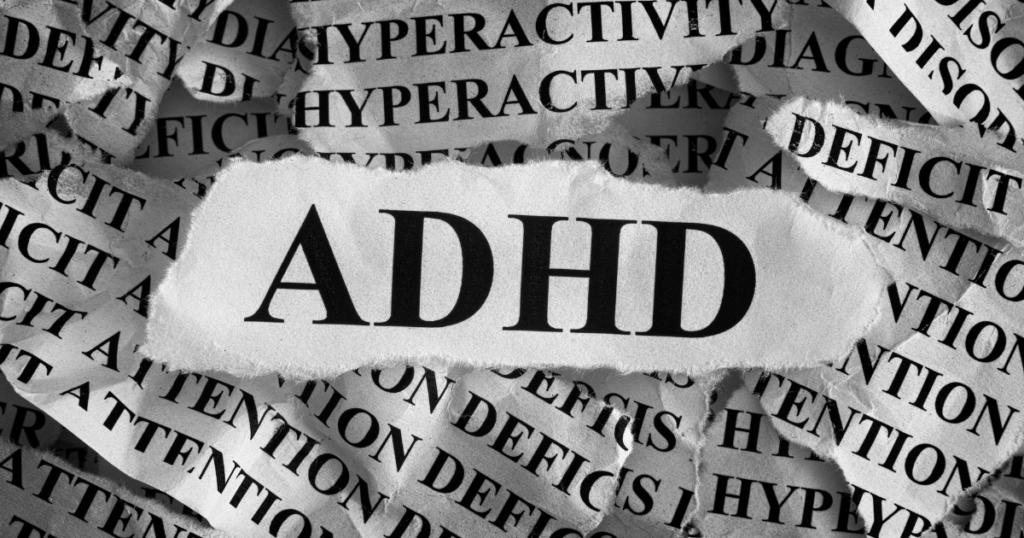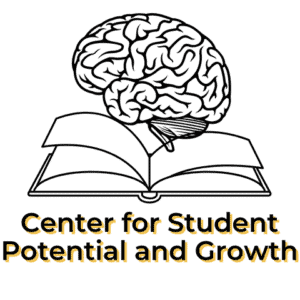
Students diagnosed with Attention Deficit Hyperactivity Disorder (ADHD) face many difficulties with their school environments.
In addition to academic challenges, some students demonstrate greater difficulty managing their emotions.
However, as educators and parents, we can help students with ADHD manage emotional dysregulation in four ways:
- Teach skills that help students better manage their emotions
- Provide supportive programming to support healthy emotional regulation
- Facilitate relationship building between school staff and parents of students who struggle with emotional dysregulation
- Support treatments and therapy to decrease the intensity of emotional dysregulation
Let’s look more into each of these four strategies.
First, let’s define and describe what ADHD entails and how emotional dysregulation may intersect with this diagnosis.
What are ADHD and Emotional Dysregulation?

Attention Deficit Hyperactivity Disorder, commonly known as ADHD, is a neurodevelopmental disorder with defining characteristics. The Diagnostic and Statistical Manual of Mental Disorders, Fifth Edition (American Psychiatric Association, 2013), states that “the essential feature of attention-deficit/hyperactivity (ADHD) is a pattern of inattention and/or hyperactivity-impulsivity that interferes with functioning or development.” (p.61) Noted diagnostic characteristics associated with ADHD include inattention, hyperactivity, and impulsivity.
Inattention is described as having limited/reduced ability to maintain focus or organization.
Hyperactivity involves increased and excessive motor activity and/or talkativeness.
Impulsivity is evidenced by quick actions lacking forethought or planning and the diminished ability to delay gratification.
Emotional Dysregulation is best described as a reduced ability to manage emotional responses, and these responses typically fall outside the typical and expected functioning given the circumstance.
ADHD can exist alongside other disorders (comorbidity) and is “associated with reduced behavioral inhibition, effortful control or restraint, and negative emotionality.” (p.62)
Due to these overlapping factors, students diagnosed with ADHD may have more difficulty when compared to their peers with managing responses to triggers that naturally occur within the educational setting. The skills to notice and respond in helpful vs. hurtful ways will help reduce the adverse outcomes associated with emotional dysregulation. Here are four ways we can support our students.
1. Teaching Students With ADHD Skills How to Regulate Their Emotions

One of the common statements I hear when talking to teaching staff and parents about students with ADHD involves their behavior.
To be clear, ADHD is not considered a behavioral disorder. However, as mentioned, students diagnosed with ADHD can present difficulties with their behavior.
As with any skill we actively teach our students, such as math or reading, we focus on specific skills that will help them perform tasks involving algebra or English Literature.
We would not expect them to know how to isolate and solve for variables if they first did not know how to add, subtract, multiply, or divide!
Therefore, we should take the same approach to address social-emotional skill gaps when we recognize academic skill gaps: we must determine what skill(s) are required and create teaching opportunities for these students.
The same principles should be applied when teaching students how to regulate their emotional responses better. Here are a few ways that we can begin to identify the missing skills that students may be lacking and then systematically teach them.
Conduct observations

As simple as it sounds, observing our students in their analog environments can provide much information about their emotional responses or behavior.
There have been countless times when I have observed a student referred to me for having emotional regulation challenges, and I was able to see in real-time what may be at the root of their responses.
Some settings and environments may exacerbate exaggerated emotional or behavioral responses.
Without objectively observing in real time what is happening around the student of interest, it can be challenging to provide education about how to support skill development.
A way that has been helpful for me when observing students is to conduct an A-B-C observation.
An A-B-C observation stands for A=Antecedent (what happens before the behavior/emotional response), B=Behavior (the observable behavior), and C=Consequence (what happens as a result of the behavior).
From here, we have more information about tangibles (what we can see and touch) that could impact this student’s emotional functioning.
Conducting several observations in different settings/class periods and times of day can provide good information about what could be at the root of this student’s emotional/behavioral responses.
Identify and discuss emotional triggers.
Even with the best observations, we may not fully understand why a particular situation may impact some students with ADHD and cause responses that can be problematic.
While the observation may provide some context, there may still be undiscovered triggers within the environment.
Using the data from our structured observation, we can then tease out themes that may emerge. We may notice that our student is having more difficulty lashing out at their peers right after lunch and recess compared to other times of the day.
Or we may find that our student may not enjoy or be good at math and does not like to be called upon in class to answer questions because they are self-conscious about getting the wrong answer. As a result, they may shut down or demonstrate intense emotion to a seemingly simple, unassuming request.
When we look at this information and see trends, we can then plan to talk with our students and parents to discuss the results of our observations.
These discussions can help us examine if we need more information to structure support and determine skill development for our students.
At this point, we may better understand what skills need to be taught or discover that the student possesses the skill but does not use it for a specific reason.
Explicitly teach the skill or motivate the student to use existing emotional regulation skills.
Once we understand the student’s perspective, individual triggers, and current skill set, we can collaboratively establish an action plan.
It is important to note that we should honor the students’ autonomy and ensure they are active in this process.
I can’t tell you how many times I have seen student “success plans” implemented, and the student had zero interest in the plan or the associated incentives.
Over the past ten years of working with students, there have been a few students who expressly did not want to improve their experience at school (especially when they were having chronic behavioral issues or difficulty managing their emotions).
It has been my experience that most students desire to have a great experience at school! We must ensure they are at the table when discussing what to work on to help them improve their emotional regulation.
There is a myriad of ways that we can employ to teach our students how to regulate their emotions. Below is a process I have used with my students that have worked well over the years.
1. Choose one skill at a time to practice with your student.
That could be something like using self-talk strategies to talk out what they are feeling and talking themselves through coping skills that they could use.
It could be going to a safe space in the classroom and staying there until they calm down.
It could also be using a fidget at their desk while working on a previously identified challenging lesson.
2. Model the skill with the student and role-play several scenarios where that particular skill may be most helpful.
Consider specific examples (ideally examples you may have gathered in your observations) and practice those with the student.
It is good practice to apply real-time situations so that the student can practice responding and getting feedback in a safe setting.
Step 3. Establish an easy-user friendly self-monitoring tool to track and review progress.
I would recommend a simple tracking form. Provide the students regular access to a paper chart or Google Form to track their progress in predetermined intervals (each class, end of the day, each week).
Determine when and how often you will meet with your student to review their progress. One thing to remember is to be as CONSISTENT as possible.
Remember, our student is learning, so they need consistent support, especially in the beginning, as they acquire and practice this skill.
Step 4. Reward the student for tracking their progress before rewarding the desired skill.
This step is critical in getting students to buy into enhancing their skillset.
Frequently, when a student is having challenges, they may receive undesired consequences and, therefore, may exhibit shame or guilt around their lack of emotional regulation.
As such, they may avoid tracking their progress or feel defeated altogether. When we can reward our students for consistently tracking progress, regardless if they practiced the skill “perfectly” or not, they are improving their self-awareness around their behaviors, which can be HUGE!
Talking with students about the information they are collecting can be eye-opening! This can lead to natural shifts in functioning that students lead and feel proud of when they are in the driver’s seat.
2. Social-Emotional Learning Curriculum To Support Healthy Emotional Regulation

In the previous section, I discussed how to target and support individual students with ADHD who present with emotional dysregulation. While this approach works and is necessary, providing sound support in the school community can help address less intensive problems as they arise.
In addition, we should provide all students the support they need to foster healthy social-emotional development.
School-wide support should include all students learning how to support and have empathy for other students who present with challenges, such as those that students diagnosed with ADHD and emotional dysregulation face.
The Collaborative for Academic, Social, and Emotional Learning (CASEL) is a leader in social-emotional learning and facilitates evidence-based social-emotional programming within school districts nationwide.
Specifically, a school-wide, systemic approach to implementing social-emotional learning within the school district has been instrumental for all students, staff, and stakeholders.
To get started, CASEL has created a Guide to School-wide SEL, which can be a starting point for facilitating a supportive school environment for not only students with ADHD or challenges with emotional dysregulation but all students.
Several school-wide social-emotional programs can be integrated into the school day as an active lessons. One particular program that I have experience with and enjoy using is the Zones of Regulation program. Teachers and other school personnel can use this program individually or in groups.
This program focuses on teaching students how to identify various emotional states that correlate to “zones” and identifying activities or coping skills that students can utilize within each zone.
Other programs, such as Conscious Discipline, focus on frameworks that positively influence school culture and practices.
The benefits of programming are that it is provided to all students to programmatically reduce the challenges with emotional and behavioral difficulties.
3. Building Strong Parent-Student-Staff Relationships

Parents of children with ADHD and emotional dysregulation difficulties are strangers to their children’s challenges at school.
Unfortunately, many of these parents have received countless stressful communications from the school regarding their child’s behavior or functioning throughout the school day, often for years.
While it is essential to ensure parents are aware of their child’s challenges at school, we should strongly aim to take a collaborative approach.
Parents have stressed the growing frustration with frequent calls about how their child is not behaving or having a difficult time during the school day.
To strengthen home/school collaboration, working with parents to build a strong relationship may include calls and communication when their child is having a positive day. It may also include proactive parent and student check-ins to highlight what has been going well.
Most importantly, regarding parents as the experts on their child is vitally crucial as parents have a vast amount of information and can assist in filling in gaps that can usually help the collaborative process.
Conjoint Behavioral Consultation (CBC) is a specific model of home-school collaboration that helps parents, school personnel, and community providers work together to support the needs of a child with challenges.
This process may help establish a framework within the school to build and facilitate healthy relationships with parents, school personnel, and community mental health providers (if involved).
4. Treatment and Therapy for ADHD and Emotional Dysregulation

Often, I am asked by parents if their child may need medication or asked specific questions regarding the type of medication that their child is taking.
As a school-based mental health professional, it is outside my scope of practice to suggest or recommend any medications at any time.
Additionally, I have encountered school personnel encouraging parents to seek medication therapy for their children.
Recommending specific medications is not the best practice for school-based personnel.
Instead, it may be helpful to communicate with parents and community-based mental health professionals about what we observe within the school setting relative to their child’s emotional or behavioral functioning.
Social-emotional rating scales can capture and quantify the intensity of students’ functioning at school. School personnel can also conduct momentary time sampling observations across settings and share the findings with parents.
Parents are also encouraged to communicate what has been shared with their pediatrician, psychiatrist, or mental health professional so that the appropriate professionals can address questions and requests regarding medication intervention.
Recommending that parents connect to school-based or community-based mental health providers for support via therapy is good practice for students with ADHD who struggle with emotional regulation.
Parents can be encouraged to sign a release of records so that school-based mental health professionals (school psychologists, guidance counselors, and licensed clinical counselors) can review treatment plans and support treatment targets within the school setting.
Next Steps
Now that you have several strategies that you can use to support students with ADHD and emotional dysregulation choose and implement the best method to ensure that students receive the assistance they need.
Which of these suggestions can you facilitate within your school district?
Reference
- American Psychiatric Association. (2013). Diagnostic and statistical manual of mental disorders (5th ed.).
